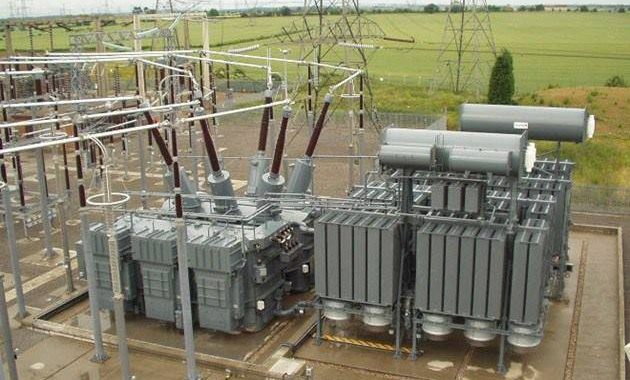One of the sectors where the greatest investment is projected over the next few years is related to electricity generation. According to the Secretariat of Energy, 62 thousand 271 million dollars will be invested in transmission, distribution and power generation.
During the presentation of the Program of Development of the National Electrical System 2015-2029 it transpired that the item to which the highest percentage of resources will be allocated is generation, with a total of 45 thousand 045 million dollars, that is, 72 percent of the total . In the meantime, 9,513 million dollars will be allocated to transmission, and another thousand 713 million dollars will be distributed.
In this context, a group of Mexican researchers assigned to a civil association in the state of Queretaro is working on the construction of the first intelligent transformer, a project that is part of the global race to reach this development.
In an interview with the Agencies InformativaConacyt, Natalia de Jesus NilaOlmedo, president of the Reconfigurable Control Research Laboratory (Licore), said the project is developed by a multidisciplinary group and in collaboration with the academy.
“We are a Queretaro civil association, which emerged from a graduate group of the Autonomous University of Querétaro (UAQ); for this project we collaborate with the university itself and with the University of Guanajuato (UGTO), the Technological University of San Luis Potosí (UTSLP) and the Technological University of Morelia (UTM); also, with the Center for Industrial Engineering and Development (Cidesi), “he explained.
Regarding the innovation they are making, he pointed out that it is a smart solid-state transformer, whose research began thanks to a support from the United States. “(That country) gave us approximately half a million dollars to start the project, resources that allowed us to develop the first prototype,” he said.
He also explained that the project is structured by a range of other research called Electric Energy more Efficient. “The ultimate goal is to develop a smart grid, that is, an intelligent electricity network (…) we have several collaborations with other institutions that develop other parts of the network,” he said.
He also pointed out that it is an intelligent transformer because it replaces some conventional parts, such as copper windings, with elements of power electronics. “By having electronics, it operates in a similar way to a cell phone; what gives the smart feature is the capacity it has of connectivity. It will have a communication control module that will allow it to communicate with the entire electrical network, optimizing the use of energy, “He explained.
According to the interviewee, the communication network that will be integrated into the transformer is not the only technological innovation, since at the same time work is being done on the integration of a wind turbine, as well as photovoltaic cells. “One of the great characteristics of this intelligent transformer is that it would operate as the link between the electric grid and this type of alternative energy,” he said.
NilaOlmedo also said that the intelligent transformer is in the development phase worldwide. “No one has finished yet, those who have a little more advance because they have more time working on it is a US group from the University of North Carolina; however, it is still under development, “he said.
How does the intelligent transformer work?
For his part, the engineer Fortino Mendoza Mondragon, technical leader in the development of the intelligent transformer, explained that this innovation is designed to replace conventional transformers (placed on light poles to distribute electricity to homes) but with the advantage of integrating communications in the electrical system, opening the door to smart electric networks (smart grid).
He specified that there is already a prototype that is in the validation stage. “We are currently testing a prototype of three kilowatts (kW), that is, the consumption of an average house in Mexico, and we are developing at the same time a model on a larger scale: 30 kW, which is equivalent to the average consumption of 10 Mexican homes. “He revealed.
Regarding the operation, he said that it is necessary to integrate an embedded system to the transformers. “Basically it is a computer with the ability to perform communications control, but also the control of solid state devices (electronic switches). The function of the transformer will not only reduce or raise the voltages, now it will be able to generate interconnection between the user and the producer of the electricity, “he said.
He added that this, in turn, will allow him to identify faults, report them, improve the quality of the energy thanks to control algorithms that will be integrated to him, as well as to specific architectures of power electronics. “Broadly speaking, the system will operate as a manager of energy and information,” he added.
A great advantage of this project is that the device will decentralize electricity generation, explained the interviewee: “Nowadays, a big disadvantage is that electricity is obtained from large hydroelectric power plants far from the city and electrical power must travel long distances; On the other hand, the smart grid concept includes the generation of renewable energies within the city, that is, the use of small modules of distributed generation “.
“To achieve this, it is necessary that there is a complex communication system, that the company providing the service has the capacity to manage energy in a much more efficient way. The idea in the future is to have many generators distributed in the city with a system that communicates with each other, “he added.
Finally, he pointed out that this is why what they are developing will have the capacity to interconnect all types of alternative energy systems that currently exist, such as wind turbines and photovoltaic cells. “We are working on the integration of these to the transformer, and later we will also address the issue of storage,” he concluded.
For the next stage, this technology achieved the approval of three subprojects by the National Council of Science and Technology, which will support research with resources through the Program of Incentives for Innovation (PEI).




